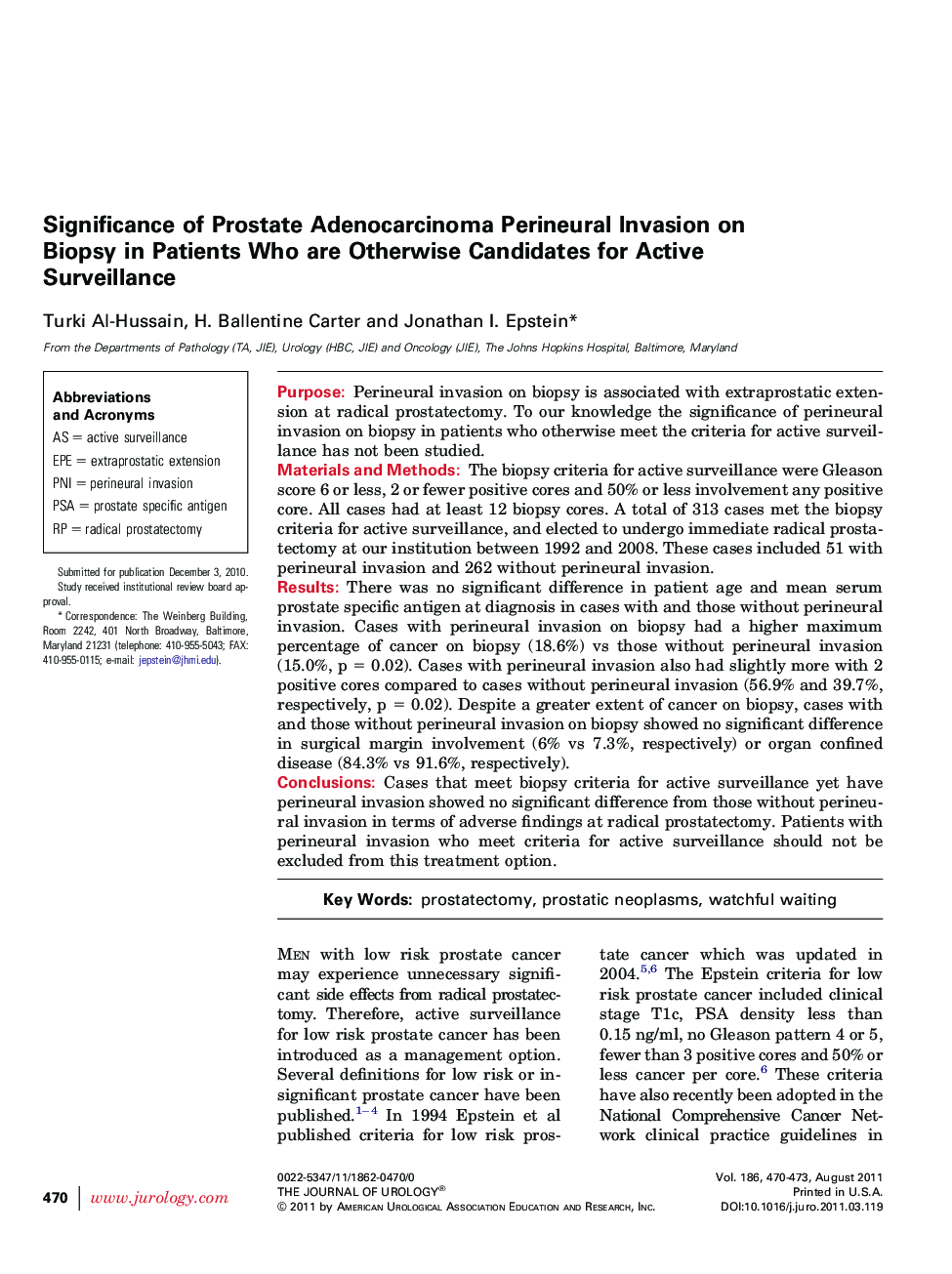| Article ID | Journal | Published Year | Pages | File Type |
|---|---|---|---|---|
| 3869050 | The Journal of Urology | 2011 | 4 Pages |
PurposePerineural invasion on biopsy is associated with extraprostatic extension at radical prostatectomy. To our knowledge the significance of perineural invasion on biopsy in patients who otherwise meet the criteria for active surveillance has not been studied.Materials and MethodsThe biopsy criteria for active surveillance were Gleason score 6 or less, 2 or fewer positive cores and 50% or less involvement any positive core. All cases had at least 12 biopsy cores. A total of 313 cases met the biopsy criteria for active surveillance, and elected to undergo immediate radical prostatectomy at our institution between 1992 and 2008. These cases included 51 with perineural invasion and 262 without perineural invasion.ResultsThere was no significant difference in patient age and mean serum prostate specific antigen at diagnosis in cases with and those without perineural invasion. Cases with perineural invasion on biopsy had a higher maximum percentage of cancer on biopsy (18.6%) vs those without perineural invasion (15.0%, p = 0.02). Cases with perineural invasion also had slightly more with 2 positive cores compared to cases without perineural invasion (56.9% and 39.7%, respectively, p = 0.02). Despite a greater extent of cancer on biopsy, cases with and those without perineural invasion on biopsy showed no significant difference in surgical margin involvement (6% vs 7.3%, respectively) or organ confined disease (84.3% vs 91.6%, respectively).ConclusionsCases that meet biopsy criteria for active surveillance yet have perineural invasion showed no significant difference from those without perineural invasion in terms of adverse findings at radical prostatectomy. Patients with perineural invasion who meet criteria for active surveillance should not be excluded from this treatment option.
